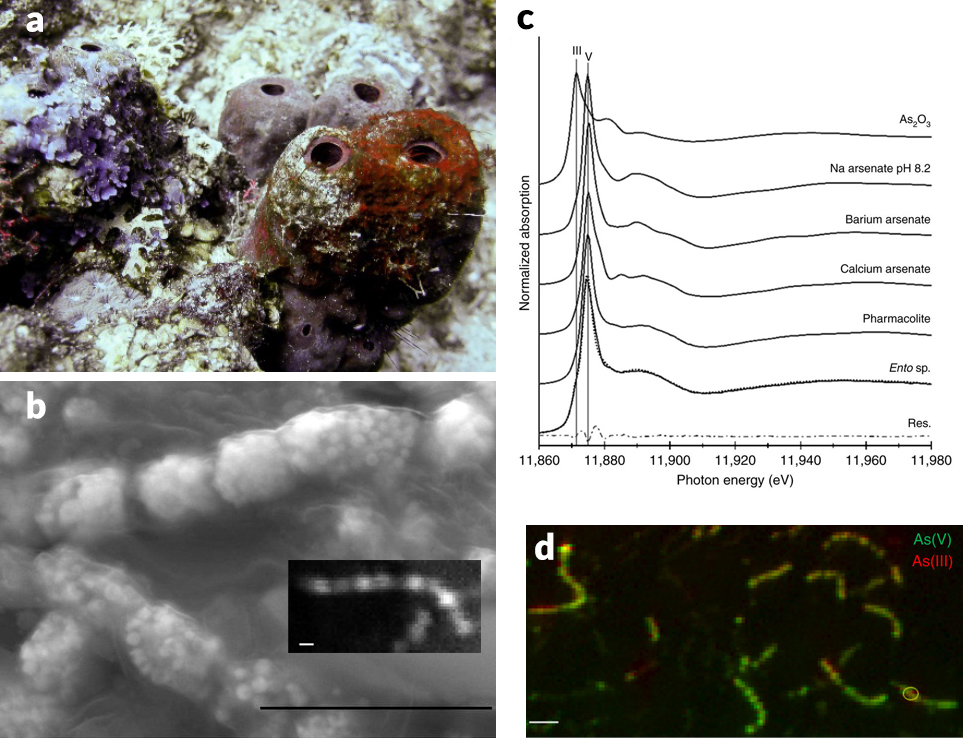A decade ago, while measuring trace elements in Red Sea sponges, zoologists from Tel Aviv University discovered that extremely high quantities of arsenic and barium were accumulated by a particular type of sponge. Subsequently, the researchers determined that this was due to symbiotic bacteria acting as a detoxifying organ in an ancient form of life with no organs of its own. This sponge, Theonella swinhoei, harbors approximately 100 symbiotic bacterial species. Of those, only one, Entotheonella sp., was found to sequester arsenic and barium. Electron microscopy coupled with synchrotron analyses performed at the European Synchrotron Radiation Facility and the ALS revealed that the bacteria mineralized the metals into amorphous spherical granules.
Before coming to the ALS, the researchers had evidence that the barium took the form of crystalline barite (BaSO4). Other preliminary results indicated that the arsenic could be in the form of calcium arsenate, but this finding was inconclusive due to sample processing. To determine the chemical speciation of the granules in their “near-native” state, the researchers brought cyro-immobilized samples of Entotheonella sp. to ALS Beamline 10.3.2. Using a custom-made cryogenic (95-degree K) apparatus developed by the Banfield group (UC Berkeley) at this beamline, they performed microfocused elemental and chemical x-ray fluorescence (XRF) mapping, barium L3-edge and arsenic K-edge x-ray absorption spectroscopy, and x-ray diffraction. The results showed that Entotheonella sp. transforms the soluble As(V) present in sea water into a solid, less mobile (and therefore less toxic) form. The researchers are currently focusing on studying the mechanism used by these bacteria to control mineralization, to further elucidate this unique detox pathway.

Work performed at ALS Beamline 10.3.2.
R. Keren, B. Mayzel, A. Lavy, I. Polishchuk, D. Levy, S.C. Fakra, B. Pokroy, and M. Ilan, “Sponge-associated bacteria mineralize arsenic and barium on intracellular vesicles,” Nat. Commun. 8, 14393 (2017), doi:10.1038/ncomms14393.